Outboards getting technical
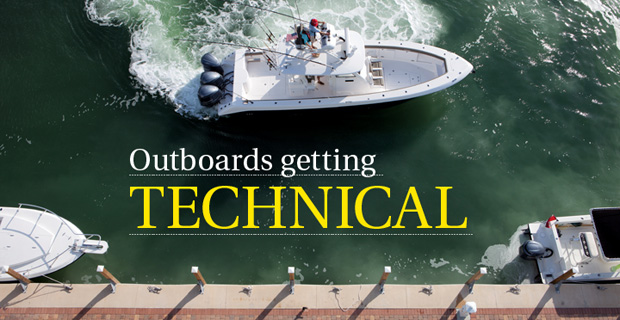
Buying patterns, tech advances favor outboard power, with electric lurking in the shadows
Inextricably linked to growing segments like pontoons and aluminum fishing boats, outboard motors shed fewer sales during the recession than inboards and sterndrives, and have even posted slight year-over-year sales gains giving the industry a much-needed bright spot. With the increasing popularity of outboard-powered categories — and free from the stricter emission controls required of inboards and sterndrives — outboard motors are poised to capture an even larger share of the marine industry’s powertrain mix.
In exclusive interviews with Boating Industry, leading engine makers offered their take on the latest breakthroughs in outboard technology, anticipated tightening of government regulations and how product planners aim to further improve the outboard experience. We also spoke with electric outboard pioneers Torqeedo and Campion about an expected big leap in electric technology that has the potential to turn the traditional outboard hegemony on its head.
Bigger than ever
According to data from the National Marine Manufacturers Association, annual outboard boat sales didn’t fall as far as other segments, decreasing 46 percent between 2004 and 2011. While that’s a staggering 100,850-unit drop, from 216,600 to 115,750, annual sales of sterndrive boats and inboard cruisers decreased by an even greater 76 percent, to 16,890 and 2,040. After years of decline, outboard boat and motor sales have begun to crawl out of the hole with slight — but significant — year-over-year sales gains, while sterndrives and inboards remain in the doldrums.
While much of the industry has migrated to four-stroke technology for its inherently smoother, quieter and (by some measures) cleaner operations, Evinrude continues to proclaim the benefits of its two-stroke E-TEC lineup, namely built-in benefits of lower weight and carbon monoxide emissions that are a current focus for all marine motor manufacturers. As the four-stroke players work to trim pounds out of their offerings, high-end technologies like electronic throttle, shifting and joystick piloting controls have brought outboards to the forefront of marine technological advances. Meanwhile, chatter suggests the Environmental Protection Agency may seek to add catalytic converter requirements to outboards by the end of the decade, reducing one of the category’s primary cost advantages over sterndrives and inboards.
Electronic wizardry

Get an experienced captain behind the wheel of an outboard boat with a joystick control system for the first time and they’ll likely experience some temporary confusion from the independently articulating engines and the mental shift caused by a vessel that articulates around the driver in the center of the boat, rather than the rear of the boat like traditional outboard setups. While newfangled joystick control systems with their $15,000-plus price tags are primarily destined for high-end boats, taking the difficulty and stress out of docking large boats is an industry breakthrough on par in significance with Sea-Doo’s iBR personal watercraft brake.
Electronic throttle, trim and shift controls have spread to an even larger portion of the outboard category. Affiliated technologies like Yamaha’s YCOP (Yamaha Customer Outboard Protection) theft protection and Mercury’s Skyhook, which electronically anchors boats via GPS, have brought dramatic end-user improvements that seemed impossible just 10 years ago.
Originally developed for inboards and sterndrives, joystick control technology has been adopted by Yamaha, Evinrude and Mercury — and evidence suggests that some of the remaining outboard players may soon join the fray. With so many new tech advancements, sales professionals will have to increase their technical proficiency to explain today’s dramatically more advanced outboards.

Yamaha’s product information manager, David Meeler, describes his job as making complicated products easy to understand. Addressing the possibility of “technical overload” with the latest round of electronic wizardry, Meeler said it’s important to label his company’s Helm Master electronic throttle/steering/trim assist/speed control/joystick setup as a complete system, rather than individual components.
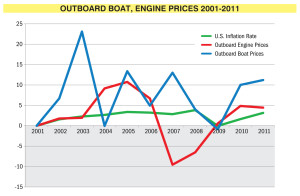
“Helm Master is and was introduced as a system, and what that system is designed to do is make boating easier, and there are a number of different ways in which you do that,” Meeler said. “There are different things that an operator of a boat needs, convenience both for docking and when operating out on the open water, so there’s different functions from different pieces of this system, the whole of which makes the entire operation of the boat [easier] from the time you leave the dock to the time you get to your fishing grounds, and then back to the dock in the evening.”
On the steep cost of joystick control systems, Evinrude’s marketing project leader, Karl Sandstrom, reiterates that while his company’s Optimus 360 by SeaStar system may seem expensive, it’s important to consider that such setups often replace similarly expensive components, including bow thrusters.
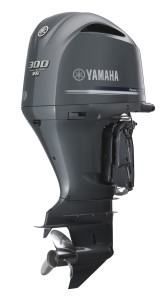
“If you take a look at what it actually brings to the table, the joystick ability, the power steering, the lack of having a bow thruster in a large vessel, and you start to add up all those things that would be separate line items … the joystick system actually ends up being pretty darn affordable for a lot of the bigger boats,” Sandstrom said. “It makes a lot of sense, and that’s why you’ve seen the popularity of it spreading quite rapidly.”
Steve Miller, product manager at Mercury Marine, feels the company’s Axius Joystick Piloting system, and specifically the Skyhook electronic anchor, will particularly appeal to big-water fishermen.
“These guys are sitting out there driving and they want to start running kites … and if you’re the only guy in the boat or one or two guys, it’s a lot of work to run kites and manage all those rods, three to four rods a kite and two to three kites out of a boat,” Miller said. “So having Skyhook, the ability to keep a boat positioned a certain way or maintain an orientation in a drift, is very helpful.”
Suzuki Marine became the fourth major outboard manufacturer in the joystick game, announcing its own joystick helm control system in March at the 2013 Japan International Boat Show. Honda and Tohatsu have not introduced joystick systems.
Powerful choices
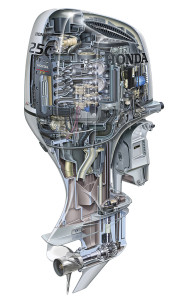
Honda, long a player in lower displacement outboards, introduced its largest-ever outboard last year, a 250 hp four-stroke based on the company’s automotive V6. That new motor aside, the outboard industry has largely avoided the horsepower wars that have invaded several other combustion-based industries.
As Evinrude’s Sandstrom pointed out, peak output levels have hardly changed in the last 30 years.
“Evinrude and Johnson Outboards came out with a 300 horsepower back in 1985, and today the largest number in the industry is 350 — I don’t see that changing a lot,” he said, speaking of the major outboard OEMs. “It could. We certainly have the ability to [produce more power].”
He added that room remains in the industry for higher-powered motors, especially in light of pontoons now being used for watersports activities and at higher speeds, assisted by the introduction of triple pontoons. Even so, he doesn’t expect power levels to skyrocket any time soon.
“Is there room for a 400-hp engine in the outboard world from a major manufacturer? I think there is,” Sandstrom said. “The fact that any of us could do it, but have chosen not to, probably says something about the horizon today.”
Yamaha’s Meeler said that larger and mid-range outboard engine classes have been strongest recently, and added that activity-targeted propellers are an important part of getting more versatility out of motors. He echoed Sandstrom’s thoughts that larger boats may lead to larger motors.
“Folks are asking for more value from their engines, and in so doing they want to go fishing in the morning, they want to go skiing in the afternoon,” he said. “They want that engine to be able to do all of those things, and they’re finding that [with] some flexible mid-range power or maybe up to 150 hp, they can do all that.”
That same power range has been a focus at Mercury as well, with its recently released 150 FourStroke claiming to be the smallest and lightest four-stroke outboard in its power class.
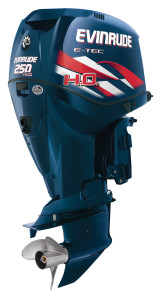
“Let’s use our ability with technology to deliver a 150 that is smaller and lighter than the competition, yet higher in displacement with better performance, high efficiency and make it the easiest engine to maintain,” said Mercury’s Miller. “A guy trying to buy as much boat as he can possibly afford and who wants to take care of it by himself can do so with our product, and that’s what the whole crux of the 150 is — that’s a strategy that we’re looking at for a lot of these mid-range products.”
Honda marketing manager Steve Drenkard said the strength of various horsepower classes is regional, with high-power engines particularly popular in the southeast, and with the latest, larger pontoons.
“People today want to have a boat that can do a little bit of everything … fishing, kids, tubing and wakeboarding,” he said. “You put a wakeboard tower on [a pontoon] and you have a little SUV on the water.”
While Honda’s new 250 four-stroke is a step up, the company continues to shy away from the largest horsepower classes.
“We’ve watched what’s happened in the industry and right now we feel we’re meeting the needs of our dealers and our customers,” Drenkard said.
Outboard weight loss
Like many industries trying to boost performance while simultaneously improving efficiency, boat builders and engine manufacturers have been working to pull weight out of their products, sometimes by simply cutting excess materials and occasionally employing ultra-light materials to replace heavier components. Sport users like the performance gains, anglers want the ability to carry more equipment and manufacturers value the opportunity to cut weight from the transom.
Larry Teeling, category manager at Mercury, likened the impact of heavy outboard motors to a lever, where the weight’s effect is magnified to significantly impact a boat’s performance.
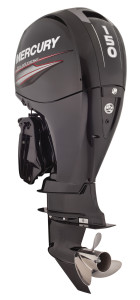
“You put 50 pounds on the back end of a lever, it has a major impact on how the boat sits in the water when you’re not moving, and just how easy it is to actually get out on plane, truly accelerate and get that top speed,” Teeling said. “For every pound it ends up being worth far more than that one single pound.”
Much of the weight reduction efforts have been focused on four-strokes that have typically come with a weight penalty versus two-stroke designs.
“Years ago when we came out with our first big four-stroke, the 130, that engine was a heavy engine and that … branded us as a heavy outboard in general,” said Honda’s Drenkard.
Now, he said, Honda’s outboards are generally no heavier or lighter than any other company’s.
“If you took all of our engines and added them up and did an apples-to-apples [comparison] with everyone else, we’re all very close,” Drenkard said. “It’s almost statistically insignificant.”
With designs targeted at weight loss and, at times, lighter materials, many four-stroke manufacturers have been able to lessen the weight penalty of four-stroke engines.
“The desire to lighten outboards, particularly four-stroke outboards on the bass boat side, allows us to provide all of the benefits associated with a four-stroke to a customer who might otherwise have a noisier two-stroke,” said Yamaha’s Meeler.
Yamaha’s latest 4.2-liter V6 ditched traditional steel cylinder sleeves to cut weight, made possible by cylinder walls that are 60 percent harder than steel. Countering that approach, Honda continues to believe steel cylinder sleeves provide the brand with a competitive advantage in durability.
An electric revolution?
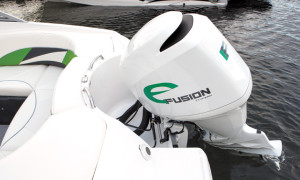
Whether it’s deserved, many electric fantasies have come and gone since the electric motor was invented more than 150 years ago. Most recently, electric cars like the Nissan Leaf and Chevrolet Volt have demonstrated the potential of the current generation’s technology, while lackluster sales of the futuristic cars have shown that consumers remain hesitant to pay a price premium to go electric when gas remains affordable.
Germany-based Torqeedo has received a lot of attention recently, as its latest product, the 80-hp Deep Blue, reset expectations for what’s possible from electric power in the marine industry. It joins the company’s 13 other electric outboards, ranging from tiny kayak motors up to the 9.9-hp Cruise.
Steve Trkla, president of Torqeedo’s American arm, feels that the impetus for mainstream electrical marine power will result from greater protection of drinking water, rather than higher fuel prices.
“We ultimately do believe it will be the protection of our drinking water as populations keep growing,” he said. “Water is going to be the most critical issue facing the United States and the world in the next 15 to 20 years, so we do believe that we’re on the right track to be the continued world leaders in taking advantage of that market.”
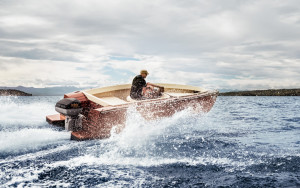
Aside from regulations, Trkla said the benefits of electric propulsion are compelling enough to ensure the sub-category’s future in the marine business — quiet performance, flat torque curves, less required maintenance and no odors.
Battery range and higher prices remain the largest stumbling blocks to the mainstream adoption of electric outboards.
“I promise you that the large companies in the gas world have been watching us very closely … they’re watching it because they know it’s coming,” Trkla said. “I see within the next five years, you’re going to see Torqeedo become quite a significant player in the overall marine industry.”
Canada’s Campion Marine is an established boat builder that has placed a significant investment in green technologies with its bio resin-based hulls that replace fiberglass. Campion has taken its green push further by partnering with Florida’s ReGen Nautic to develop the highest output electric outboard on the market. Its 180-hp E-180 is still not targeted at the masses, and is being initially deployed in Switzerland, one of the world’s greenest countries.
Looking forward, Campion president Brock Elliott, said the company’s education derived from the E-180 project has been invaluable. The technology has put the cart ahead of the horse, he said, as it and others await the much-anticipated big breakthrough in battery technology.
The company is testing in Switzerland, waiting for the big battery advance. With the rest of the world, from General Motors to Boeing, working on improved battery technology he also expects the outboard landscape to be drastically different in about five years.
“The leap is coming; the question is when,” Elliott said. “Even if it’s three to five years, who cares?”
Elliott added that his company, still almost exclusively focused around gas power, has been very pleased with the pace of development in the outboard market and expects some of the established outboard OEMs to be looking at electric power. The goal for electric outboards, he said, is to eventually offer a run time between 4-8 hours, with a recharge time in the six-hour range.
Predicting the future
Product planners and PR types tend to clam up when the subject of “what’s next” is raised, although most agreed on a few coming themes in the outboard market: continued engine refinement, more integration between engines and the vessels they’re attached to, less weight and the expectation that the catalytic converters may soon be required equipment on outboards.
While stricter EPA regulations will undoubtedly tax an already stressed industry, Evinrude’s Sandstrom said they will ultimately lead to greater refinement for the end-users.
“I think you’re going to see more of what you’ve seen, and what we’ve seen in the last 15 years or so is a refinement of the outboard motor and what benefits it gives the consumer,” he said. “The launching point of that indeed was the U.S. EPA’s [increased] emission requirements.”
Remaining tight-lipped about future products, Honda’s Drenkard said its marine team has been working closer with the rest of the Honda’s divisions, and predicted that the next round of innovations will be focused on improving customer ease of use, convenience and cost of ownership.
At Mercury, Teeling cited underlying demographic trends that will continue supporting the growth of pontoons and, therefore, outboards, including an aging population to the simplicity and versatility of pontoons. As the industry recovers from the recession, he said the industry must focus on maintaining access to water and promoting the recreational value of the industry.
“Anything we can do to make things more fun, more intuitive, I think the better we’ll be and the industry will be as a whole,” he said.
Yamaha also expects outboards to continue their success as demographic trends, shifts in buying patterns, improved performance and convenience factors drive customers toward removable power.
“They’re getting lighter, they’re fuel efficient, they’re smooth, they’re quiet and that’s really want the boating public is looking for,” said Meeler. “There are additional benefits: they’re easy to install, they’re easy to maintain [and] when you get into a re-power situation, taking the old motor off and putting a new motor on is a whole lot easier than when you’re talking about an inboard or sterndrive situation. People are coming to understand that the outboard technology offers tremendous power and the benefits of a four-stroke that used to be only available with inboard engines.”


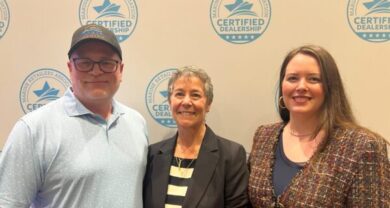
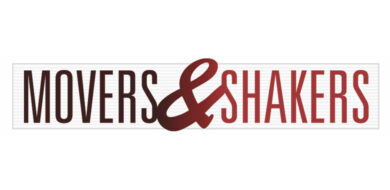
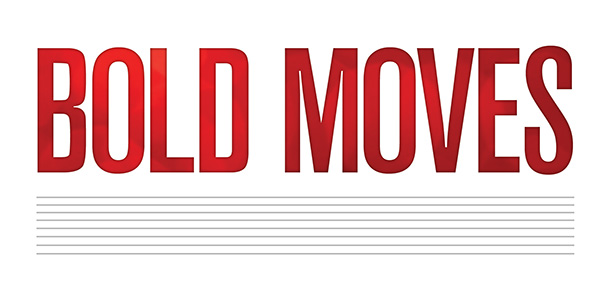
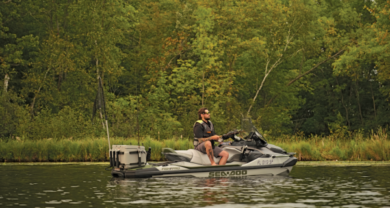

Hi There,
Please could you let me know what is the minimum hp required for sky hook joyistic system for any outboard engine??
Thanks allot
It’s interesting how you said that electric throttle and joystick piloting has helped to make outboard motors come to the top of the charts. Having a good outboard motor service to help you take care of what you use would probably be a wise idea. Especially if there is new technology involved it would probably be better to leave repairs to the expert.
It’s interesting that more outboard motors are being made to have lower carbon monoxide emissions. One of my friends has a boat, so I think they may be interested in learning more about outboard motor improvement–especially since getting an outboard motor might be something they’re interested in. Thanks for all the great information on outboard motors.